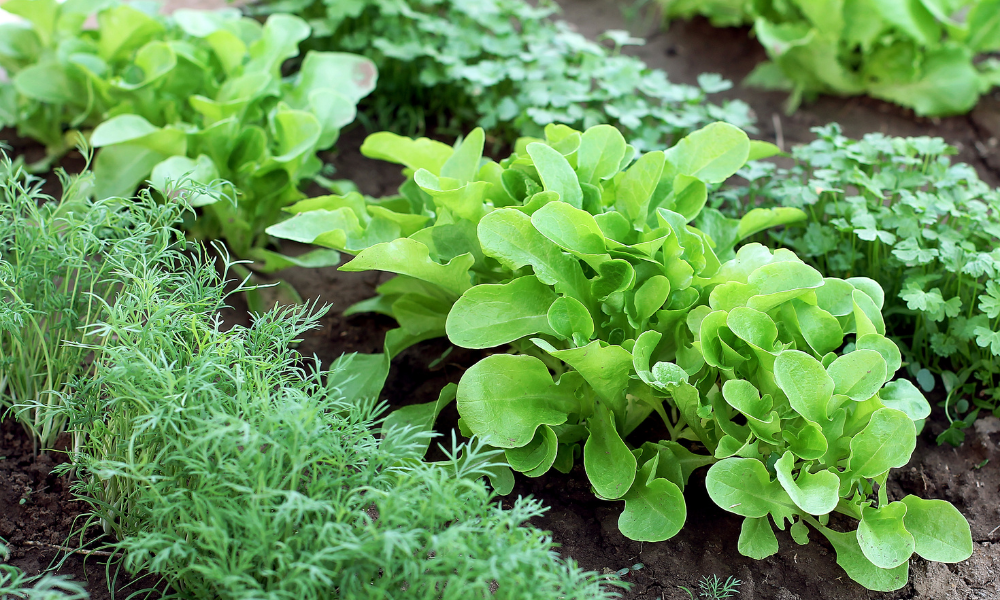
It’s nearly here—my favorite time of the year: the opening of our annual U-Pick Garden!
Every year, we invite the public to come have fun on the farm, picking produce straight from our garden. It’s always a blast watching families reconnect with nature and the food growing cycle. The kids love it, the adults love it, and we love it!
We’ve been growing our own healthy food at Stoney Creek Farm for more than 15 years. We’ve also helped hundreds of folks find their own footing in the garden, from our Gardening 101 classes to our garden rental plots.
Here are 5 of the most common vegetable gardening mistakes we’ve seen made—and how you can avoid them.
Not testing & amending your soil
It can be easy to get excited about your new garden, tilling up the soil and plopping in the new transplants you just picked up from the local garden shop.
But wait—it’s not time to plant yet.
Not all soil is naturally conducive to the types of vegetables you want to grow.
For instance, tomatoes thrive in soil with a 6.0 – 6.8 pH balance level. If your soil is particularly acidic (lower than 6.0), your soil test results may recommend adding calcium carbonate or dolomite to your soil.
Or take squash as another example. Squash are hungry plants that need lots of nutrients to pull from, so adding compost or manure to your soil before planting is a must.
That means it’s important to test your soil before planting.
Here at Stoney Creek Farm, we test our soil every spring before we start planting by sending in a soil sample to our local UT Ag Extension.
Standard soil tests provide information on the levels of phosphorus and potassium/potash in your soil. The report will typically include recommendations for improving soil fertility; you can also request recommendations that focus on organic solutions.
Overfertilizing
It’s always important to test and amend your soil before planting.
But there is such a thing as overfertilizing your soil.
For instance, if you over fertilize your soil, your tomato plants will go nuts producing foliage—but not enough fruit.
Like a tightrope walk, it’s a balancing act.
But the good news is that when you test your soil, you’ll receive a report with amendment recommendations. By following this guide, along with researching the nutritional needs of each vegetable you plan on planting, you’ll ensure that you don’t make the mistake of overfertilizing your garden.
Would you rather make your own compost tea, a natural fertilizer? Comfrey is a great herb that serves as one of the BEST organic fertilizers. Below, I show you exactly how to make your own comfrey compost tea.
Not giving your plants enough space
No one likes being on a crowded elevator.
And your plants don’t like other plants being too close for comfort, either. Without enough space for aeration, plants can become susceptible to fungus growth.
For instance, tomatoes like to be roomy. Tomatoes need a 24 inch box of air space around them to prevent fungus.
Be sure to do your research on each vegetable plant you’ll be growing to find out the amount of space needed between each plant. This pdf file from Tennessee Department of Agriculture Extension Publications provides a great resource for garden planning.
Not enough sunlight
Most vegetables need 6 – 8 hours of direct sunlight, with some types of produce requiring more fun in the sun than others.
So nope, a shady spot under the tree isn’t the best place for your tomatoes.
If you don’t have a space that allows this, consider planting your produce in containers that can be moved around with the sun. Sure, this will require more manual work on your part, but the benefits of enjoying your own homegrown vegetables is worth it.
Overwatering
This is the biggest mistake of all—drowning your plants. A flood of water is where your vegetable dreams go to die.
So how much should you water your plants?
Your vegetable garden needs approximately one inch of water per week, so if it does not rain at least one inch, you will need to water your plants. By keeping a rain gauge near your garden, you can monitor the rainfall and fill in the gaps when necessary.
An easy visual to help you during a dry patch of weather is this: each plant while developing needs approximately one quart (a mason jar) full of water distributed over the week. When the plants get larger, they may need more water.
This will of course depend on the types of vegetables you’re growing and the climate you live in.
Check out this watering chart from Old Farmer’s Almanac for a guide to when to water popular vegetables.
***
Happy gardening! If you have questions about your vegetable garden, we are always here to help. Email us at stoneycreekfarmtennessee@gmail.com.
RELATED READING:

